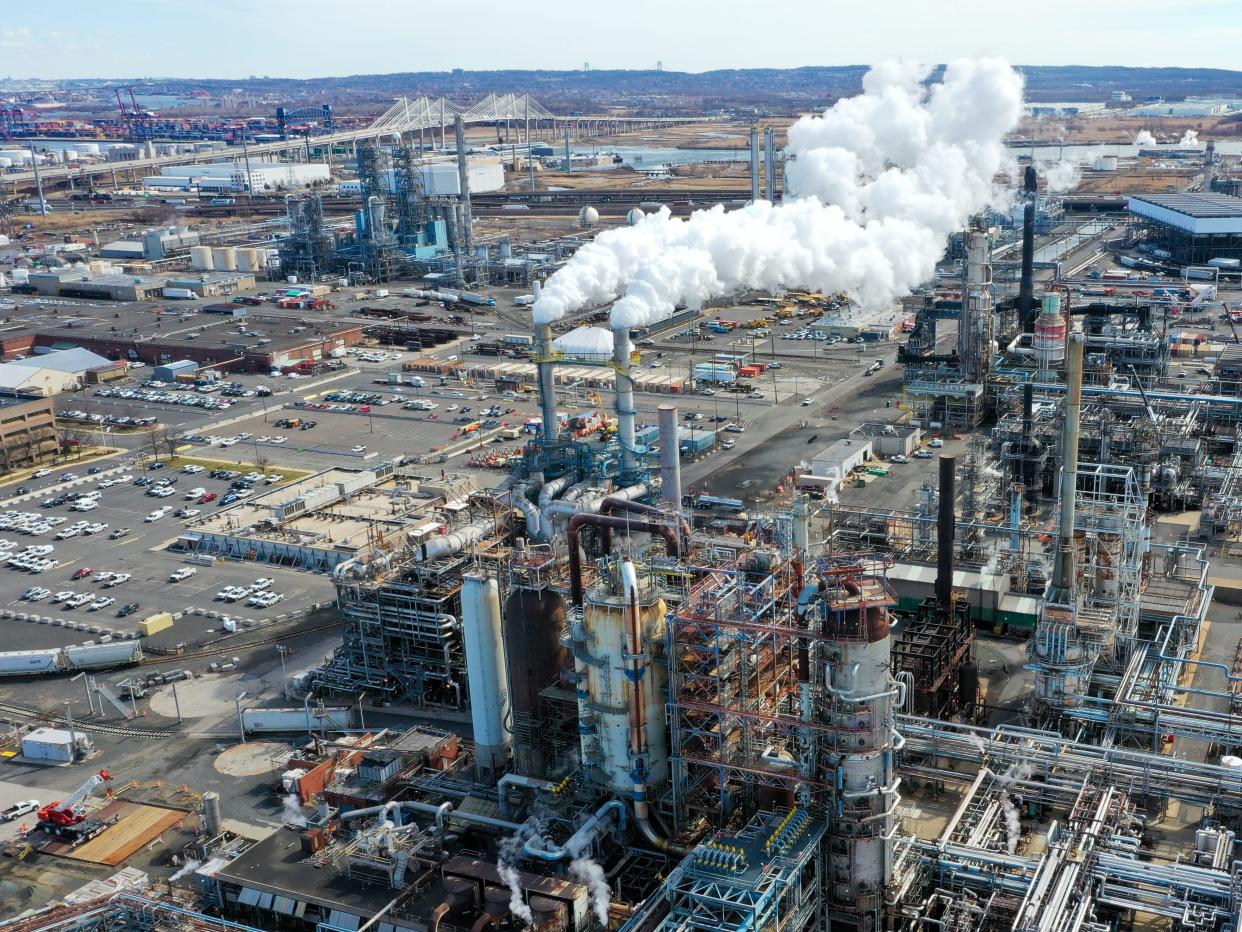Oil prices rise above $100 a barrel as Biden fails to secure an oil output deal with Saudi Arabia

- Oops!Something went wrong.Please try again later.
Oil rose about 2% on Monday, boosted by concern over a potential supply shortfall.
Prices topped $100 a barrel after a meeting between Joe Biden and Saudi leadership yielded no pledge to raise output.
Monday's rise in oil prices reverses some of last week's losses on the back of fears of recession.
Oil prices rose Monday as supply pressures brew following President Joe Biden's visit to Saudi Arabia.
The Brent crude, global benchmark rose 2.69% to $103.79 a barrel — set for its biggest one-day rise since early July. Last week, it dropped for a fifth straight week, under pressure from concerns about demand destruction if recession takes hold.
Supply constraints are boiling up in energy markets after Biden failed to persuade Crown Prince Mohammed Bin Salman, the de facto leader of Saudi Arabia, to boost oil production in an attempt to help bring down sky-high energy prices. Sanctions and boycotts on Russian fuel over the war in Ukraine have forced many countries to seek other alternative sources of supply. Instead, Saudi ministers said the country would align its oil production within the framework of the OPEC+, per Bloomberg.
"WTI and Brent crude oil futures trade higher after President Biden, as expected, left the Middle East with no promise of additional barrels to help suppress record high US gasoline prices," analysts at ING wrote.
Two of the world's leading oil exporters, Saudi Arabia and the United Arab Emirates, said they were already pumping as much as they can. Even though there is concern that global growth could slow, and bring with it a decline in energy usage, global supply is tight enough to have pushed the oil price above $120 last month.
Against that backdrop, gasoline prices in the US topped $5 a gallon for the first time in early June, contributing to hot inflation ripping through the economy and hurting American drivers.
"Supply risks remain evident in international markets, and futures curves remain in backwardation. Despite the ructions in the speculative futures markets, the real-world dynamic remains as supportive of oil prices as ever," OANDA analyst Jeffrey Halley said.
The potential for demand destruction has caused oil prices to slip in recent weeks, but on the physical markets, where traders buy and sell actual cargoes of oil, prices in northwest Europe at least are at 14-year highs, reflecting a shortage of easily available crude.
With investors looking for US interest rates to rise by at least another three quarters of a point this month, while a patchy earnings season unfolds, energy markets are unlikely to be free of volatility in the coming weeks.
Read the original article on Business Insider

